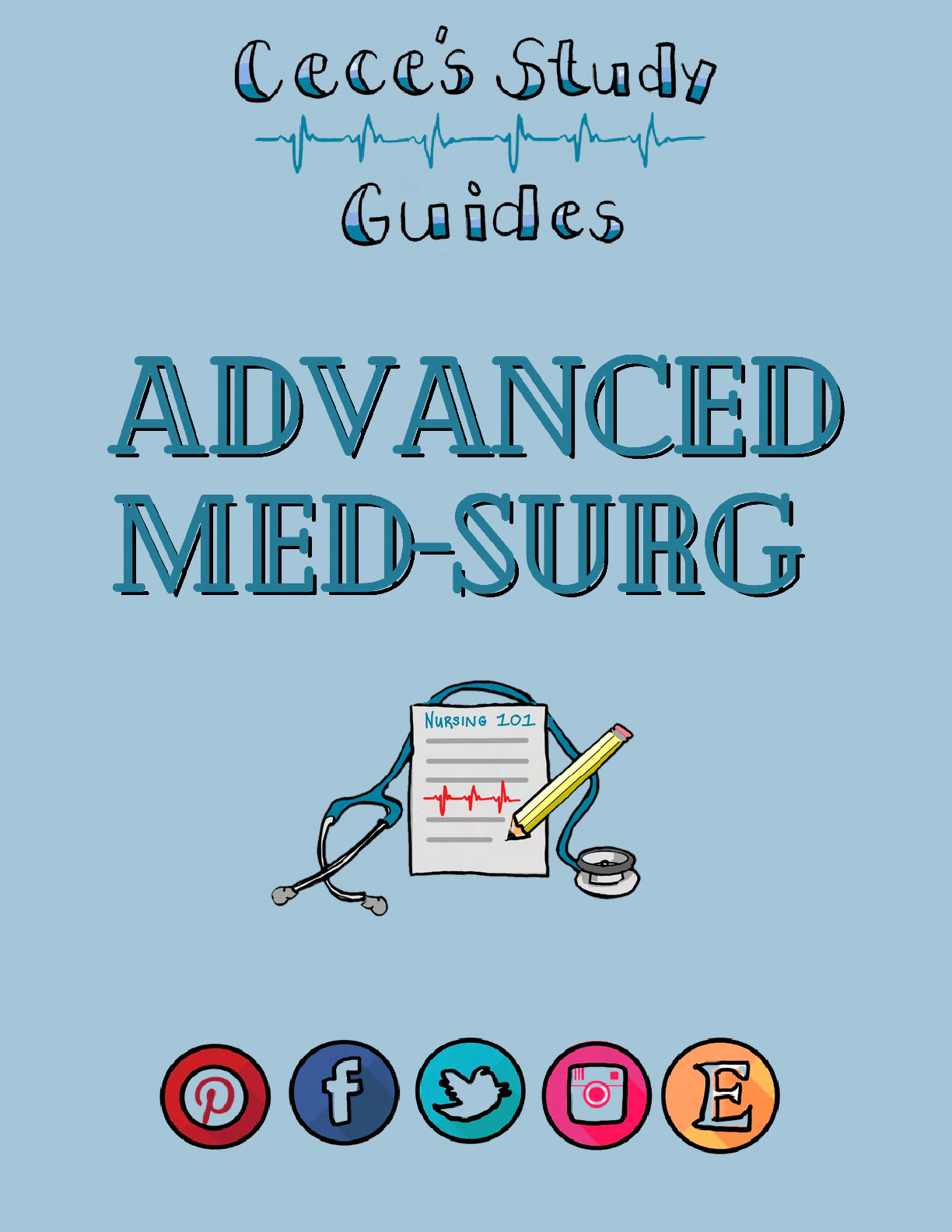Social Sciences > STUDY GUIDE > ATI TEAS 6 - Science (Human Anatomy and Physiology (All)
ATI TEAS 6 - Science (Human Anatomy and Physiology
Document Content and Description Below
Lowest Hierarchy level is at Organelles within a cell. They obtain energy from food and reproduction. -Cells with the same function are collected into larger groups called Tissues. -Tissues are coll... ected into Organs, carry out single task, like oxygenated blood (lungs), or filter out waste (kidneys). -Organs work together in systems that perform coordinated large-scale functions, like nourishing the body (digestive) or protecting the body from attacks (immune). Cell Parts Organelles: Cell parts that function within a cell. They coordinate with other organelles to performs a cell's basic function, like energy processing and waste excretion. ~Examples: Ribosomes, Golgi Apparatus, Mitochondria, The Nucleus. The Nucleus -Nucleus: Small structure that contains Chromosomes and Regulates the DNA of a cell. Defining structure of eukaryotic cells. It is responsible for the passing on of genetic traits between generations. -Contains: nuclear envelope, nucleoplasm, a nucleolus, nuclear pores, chromatin, and ribosomes. Chromosomes Highly condensed, threadlike rods of DNA. DNA is genetic material that stores information about the plant or animal. Chromatin Consists of the DNA and Proteins that make up chromosomes. Nucleolus Structure contained within the nucleus, consists of proteins. Small, Round, and does not have a membrane. Involved in protein synthesis, and synthesizes and stores RNA. Nuclear Envelope Encloses the nucleus. Consists of inner and outer membranes made of lipids. Nuclear Pores Involved in exchange of material between nucleus and the cytoplasm. Nucleoplasm Liquid within the membrane and is similar to cytoplasm. Cell Membrane "Plasma Membrane" -Made of Lipids and Proteins -Isolates the cell from its external environment while still enabling the cellar to communicate with the outside environment. -Consists: Phospholipid bilayer with the hydrophilic ends of the outer layer facing external environment. ~Cholesterol: Adds stiffness and flexibility ~Glycolipids: Help cell to recognize other cells of the organisms. ~Proteins: Help give cells shape ~Special Proteins: Helps cell communicate with external environment. ~Other Proteins: Transport molecules across membrane Selective Permeability With regard to size, charge, and solubility. -Size: Membrane allows small molecules to diffuse through it. Oxygen and Water molecules are small and can pass through the cells membrane. -Charge: Ions on a cells surface either attracts or repels ions. Ions with like charges are repelled, and ions with opposite charges are attracted to the surface. -Solubility: Molecules that are soluble in phospholipids can usually pass through the membrane. Many are not able to diffuse the membrane, and if anything they'll have to be moved through by active transport and vesicles Cell Structures Inside the cell. Contain: Ribosomes, Golgi Apparatus, Vacuoles, Vesicles, Cytoskeleton, Microtubules, Cytosol, Cytoplasm, Cell Membrane, Endoplasmic Reticulum, Mitochondria Ribosomes Involved in synthesizing proteins from amino acids. -Make up about a quarter of a cell. -Some are embedded in the Rough Endoplasmic Reticulum (Rough ER) Golgi Apparatus Involved in synthesizing materials like proteins that are transported out of the cell. ~Modifies and Packages proteins secreted from the cell. -Located near the nucleus and has layers of membranes. Vacuoles Sacs used for storage, digestion, and waste removal. -Plant: Has one large vacuole -Animal: Has small, sometimes numerous vacuoles. Vesicles Small organelle within a cell, has a membrane. -Functions: Moving materials within a cell. Cytoskeleton Consist of microtubules that help shape and support the cell. Microtubules Part of cytoskeleton. -Help support the cell. -Made of proteins Cytosol Liquid materials in the cell. Mostly water, also contains floating molecules. Cytoplasm Refers to Cytosol and the substructures (organelles) found within the plasma membrane, but not within the nucleus. Cell Membrane Acting as a barrier. Helps keep cytoplasm in and substances located outside the cell out. -Helps determine what is allowed to exit and enter. Endoplasmic Reticulum Two Types: -Rough ER: Has ribosomes on surface. ~Functions: Manufacture lysosomal enzymes, Manufacture of secreted proteins. (Protein production, protein folding, quality control, and despatch) -Smooth ER: Has no ribosomes. ~Functions: Manufacture Lipids (fat), Metabolism, Steroid Hormone production (adrenal cortex and endocrine glands), Helps liver detox. -Tubular Network that comprises the transport system of a cell. It is fused to the nuclear membrane and extendsthrough cytoplasm to the cell membrane. Mitochondria Vary in terms of size and quantity. Has various functions. -Functions: Production of Cell Energy (ATP) (Main function), Cell Signaling (Communications are carried out), Cell Differentiation (Cell transforms into a cell with more specialized purpose), Cell Cycle and Growth Regulation (Growth and Death, Reproduction). -Inner and Outer membrane: ~Inner: Encloses the matrix. Contains mtDNA and ribosomes. ~Between the 2 Membranes: Cristae (Folds). Chemical reactions occur here [Show More]
Last updated: 1 year ago
Preview 1 out of 73 pages
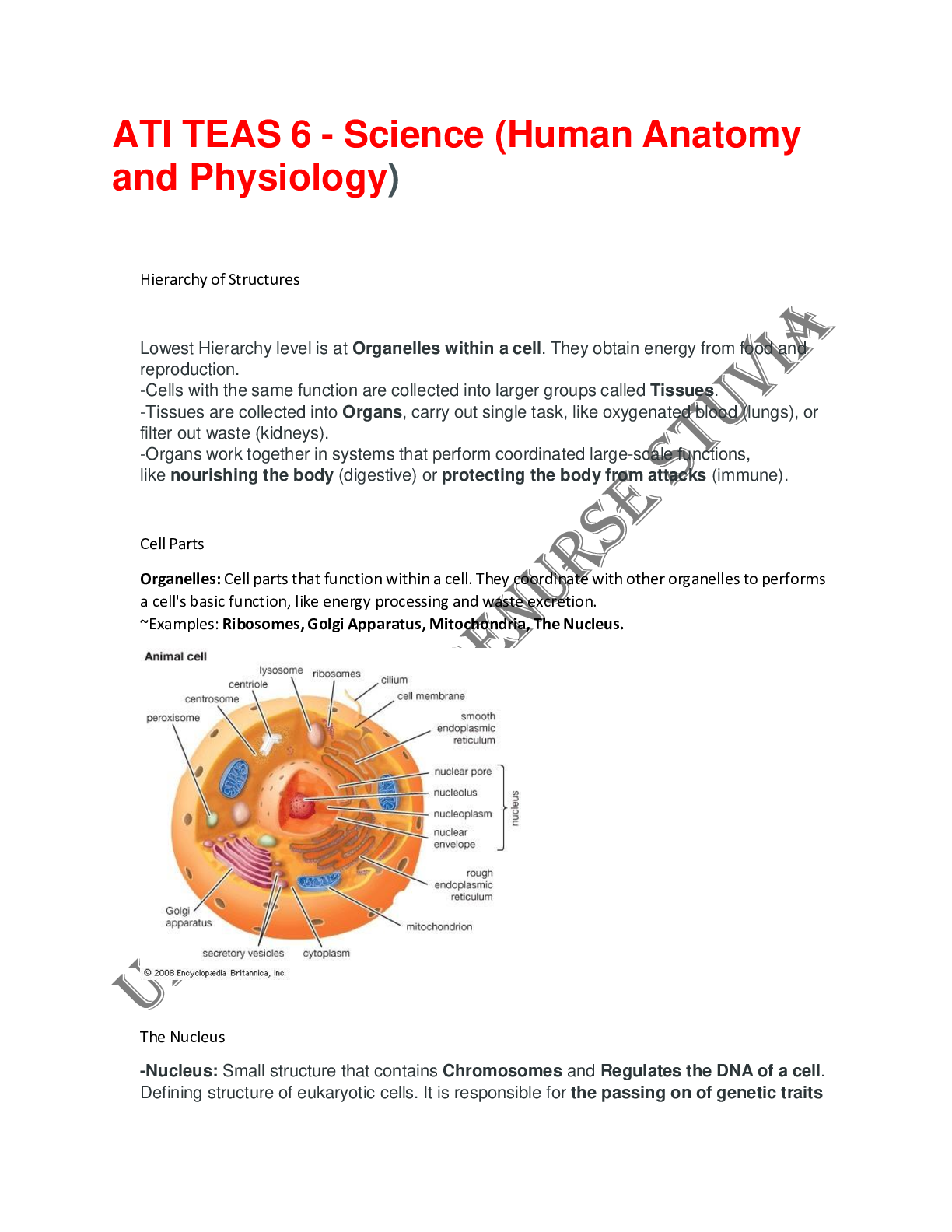
Reviews( 0 )
Document information
Connected school, study & course
About the document
Uploaded On
Aug 12, 2021
Number of pages
73
Written in
Additional information
This document has been written for:
Uploaded
Aug 12, 2021
Downloads
0
Views
50


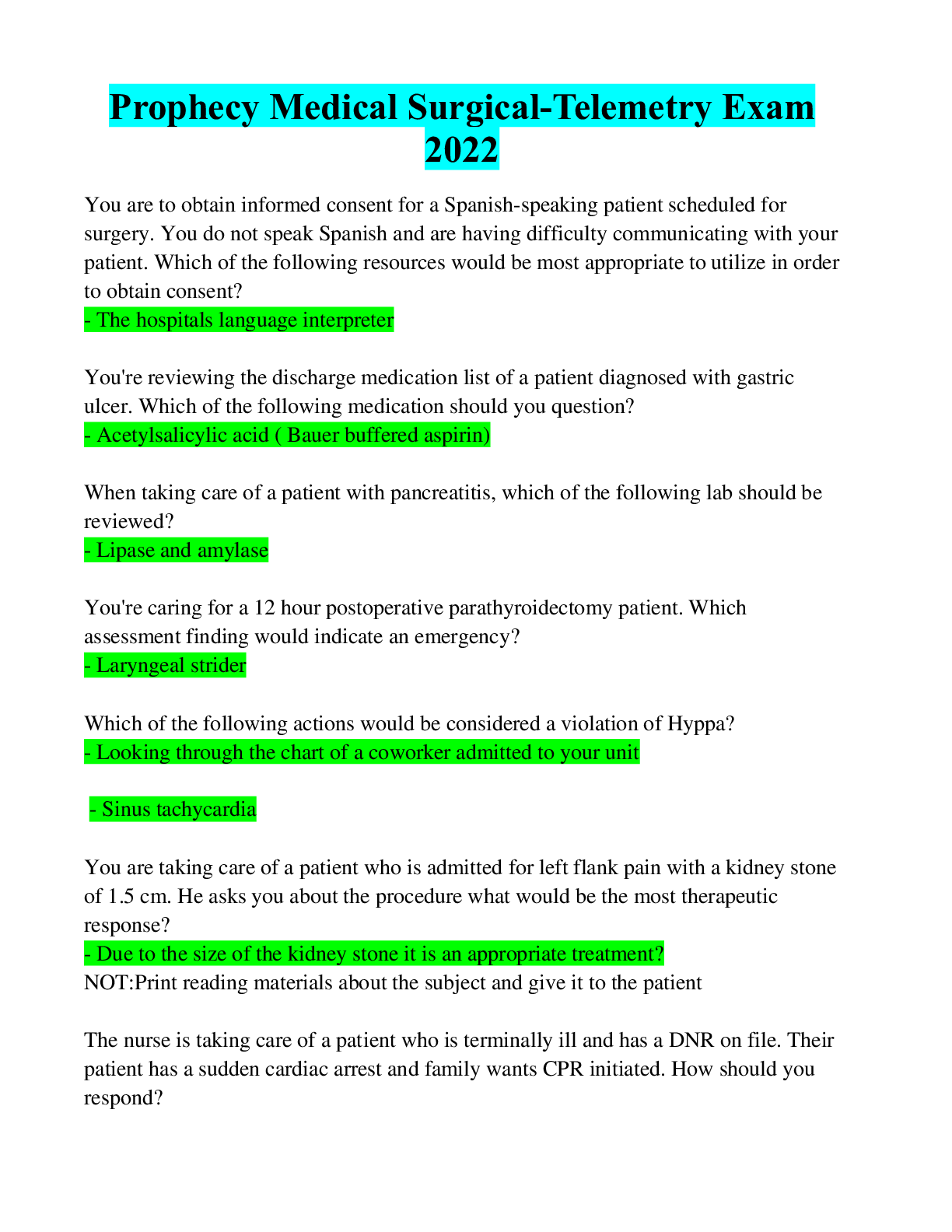
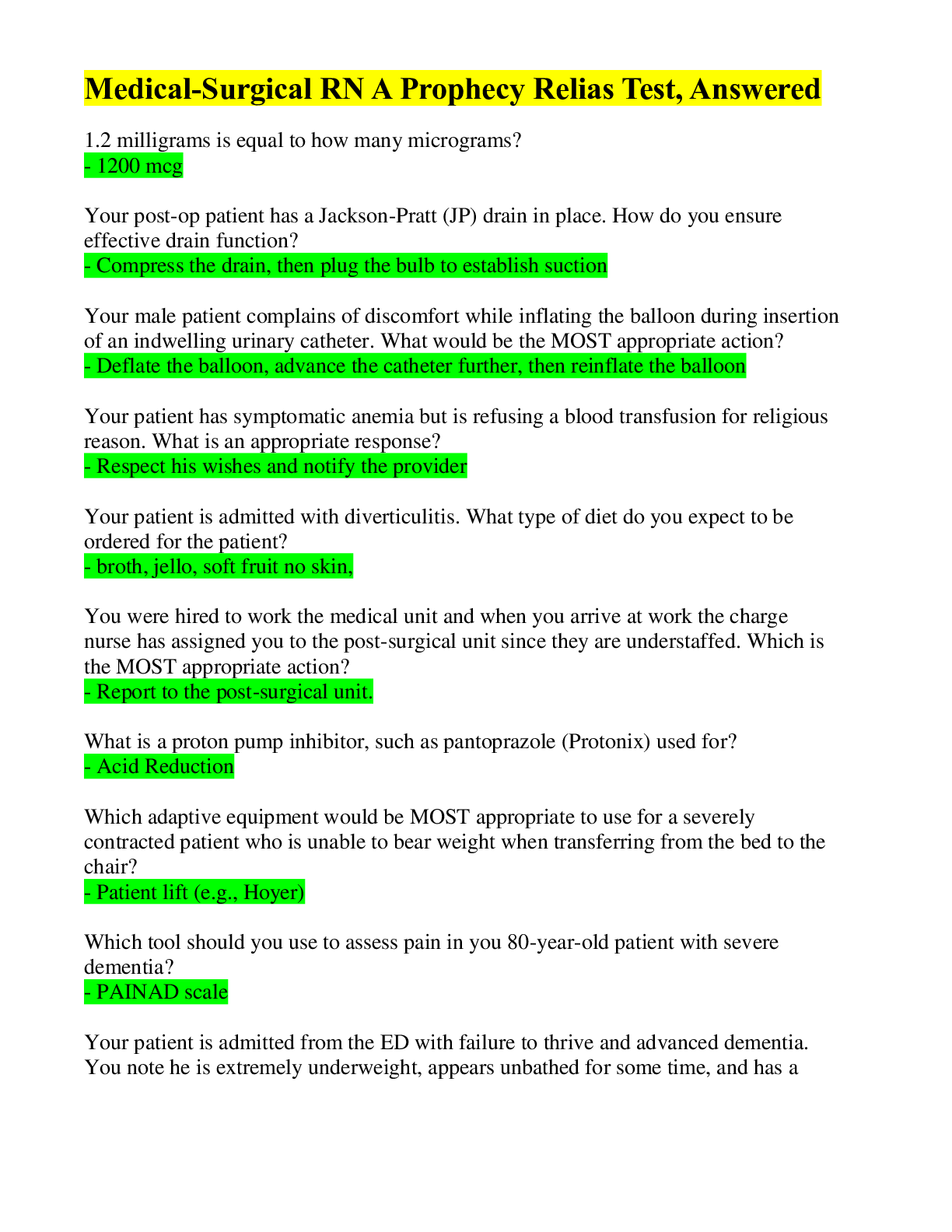
.png)

.png)
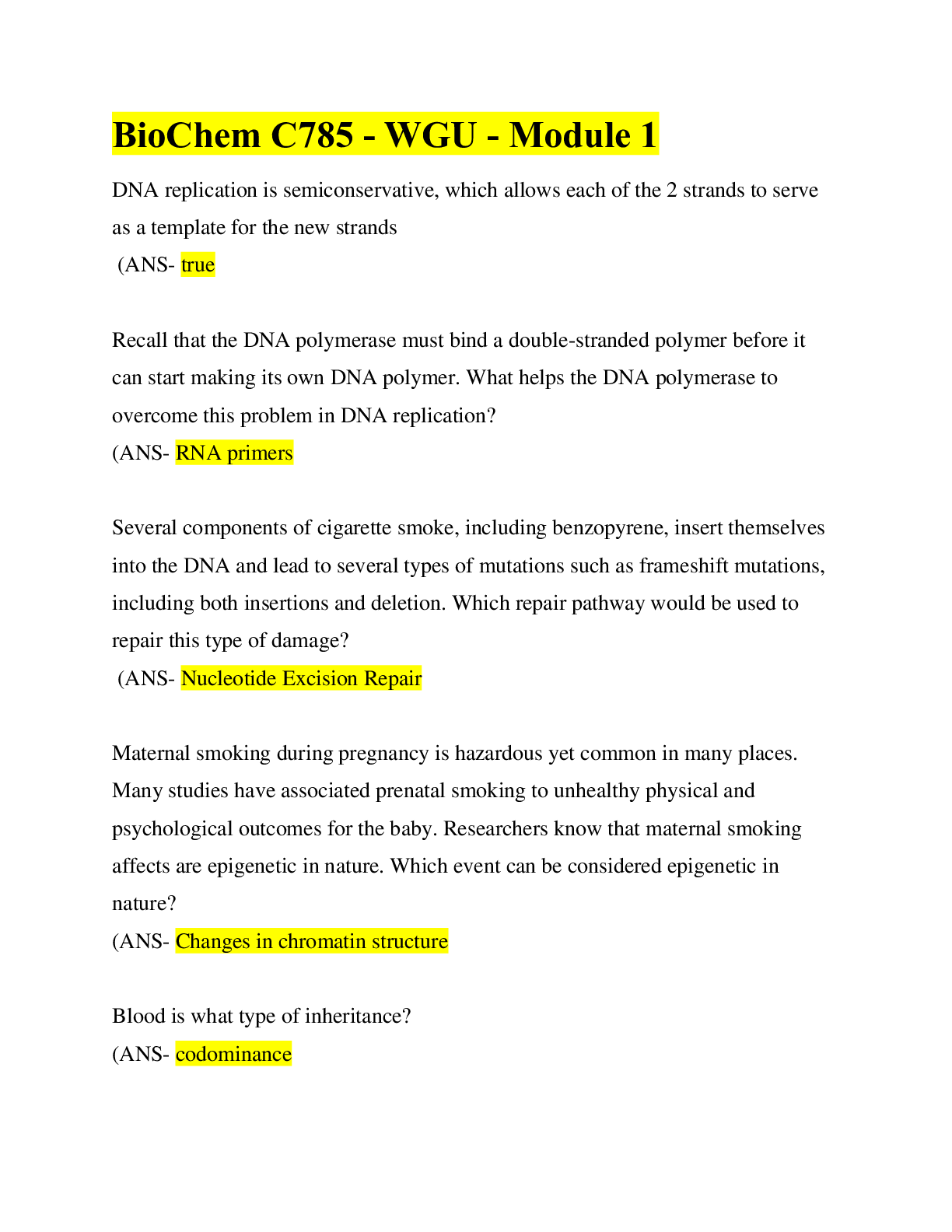

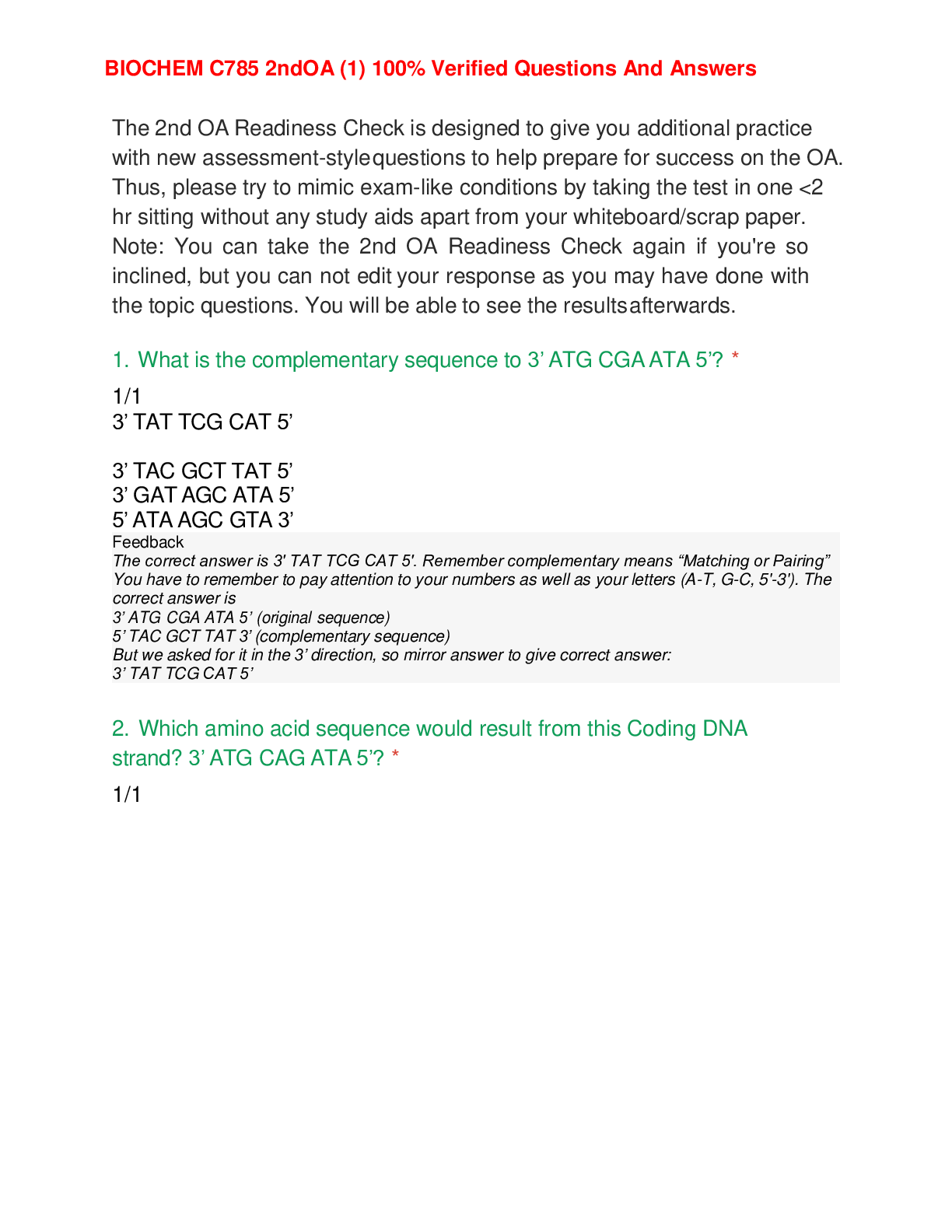

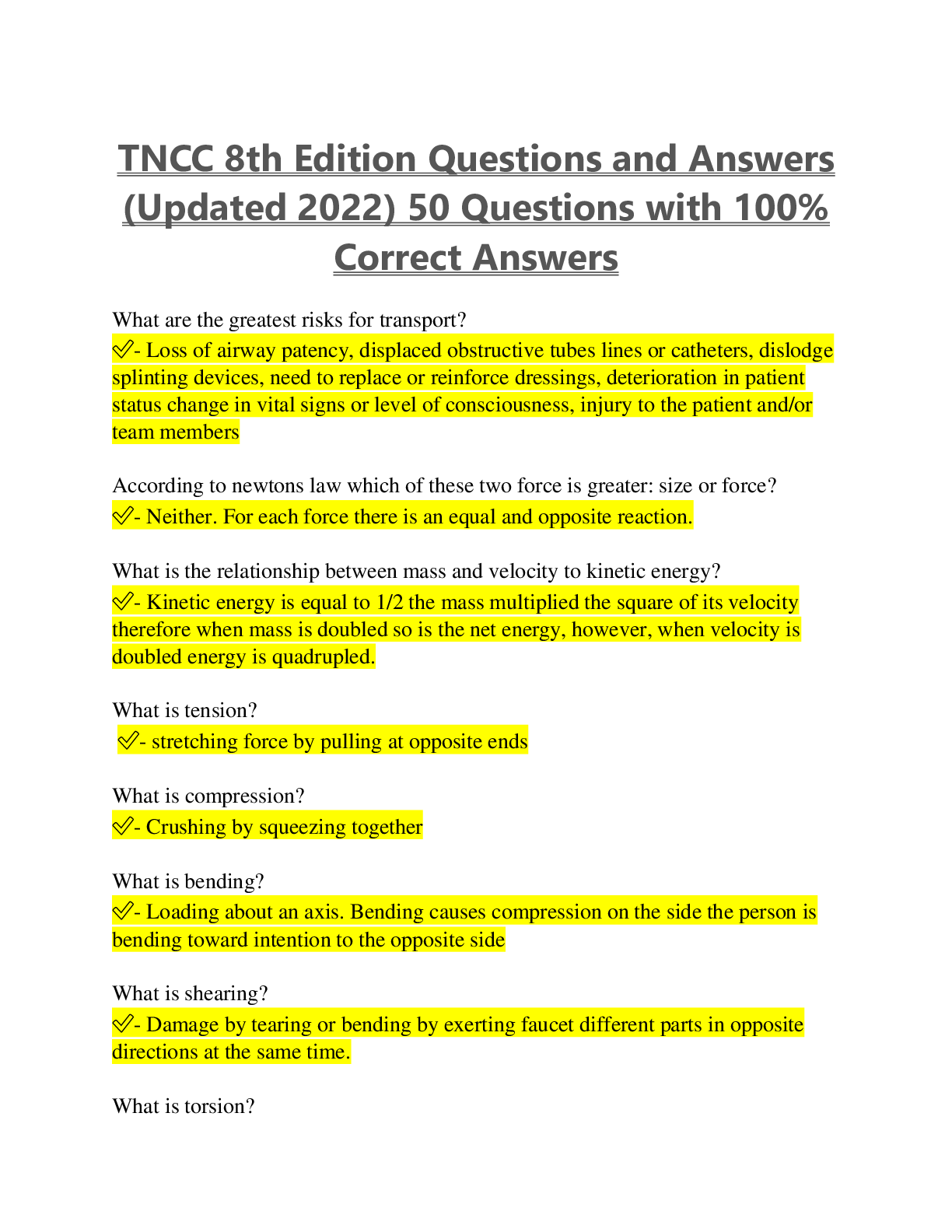
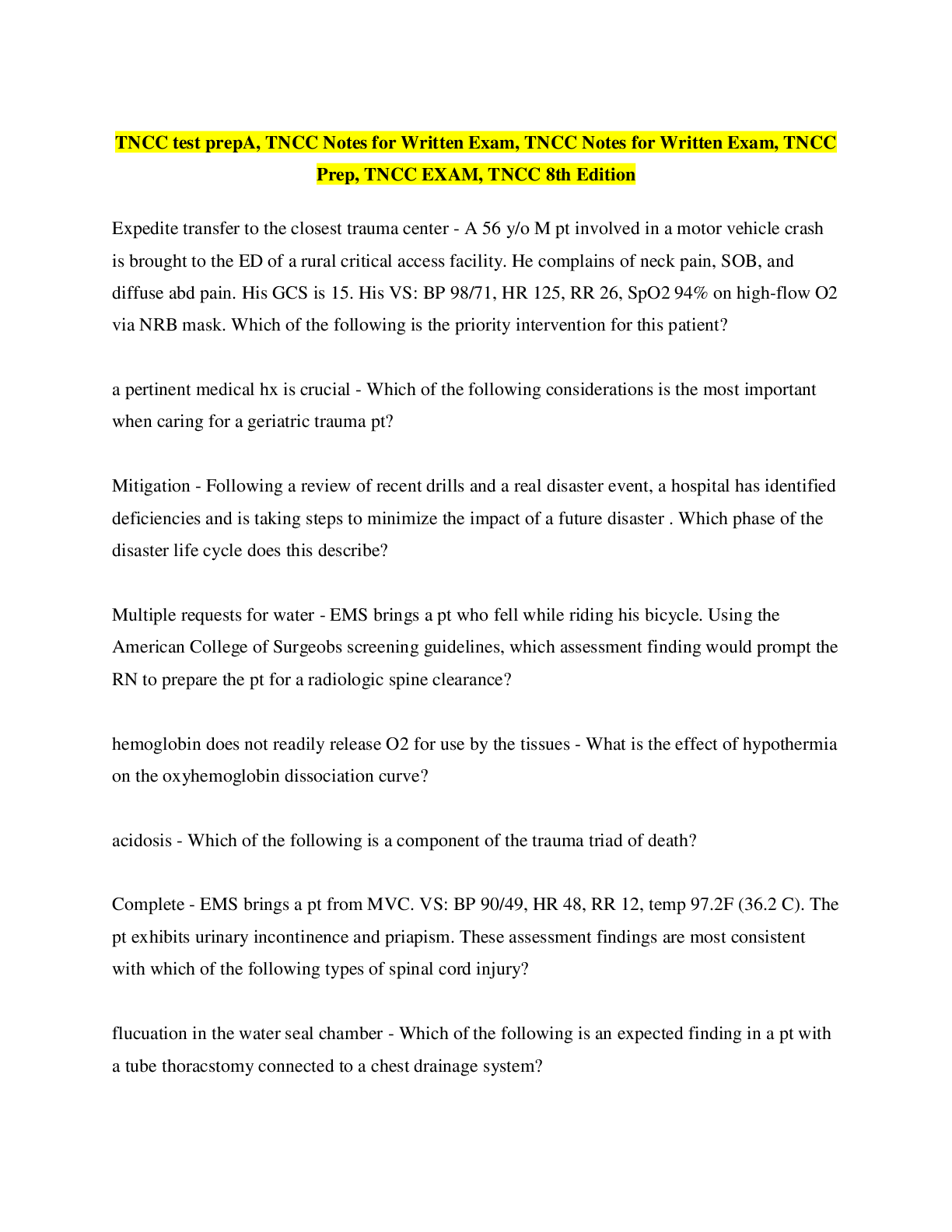
.png)
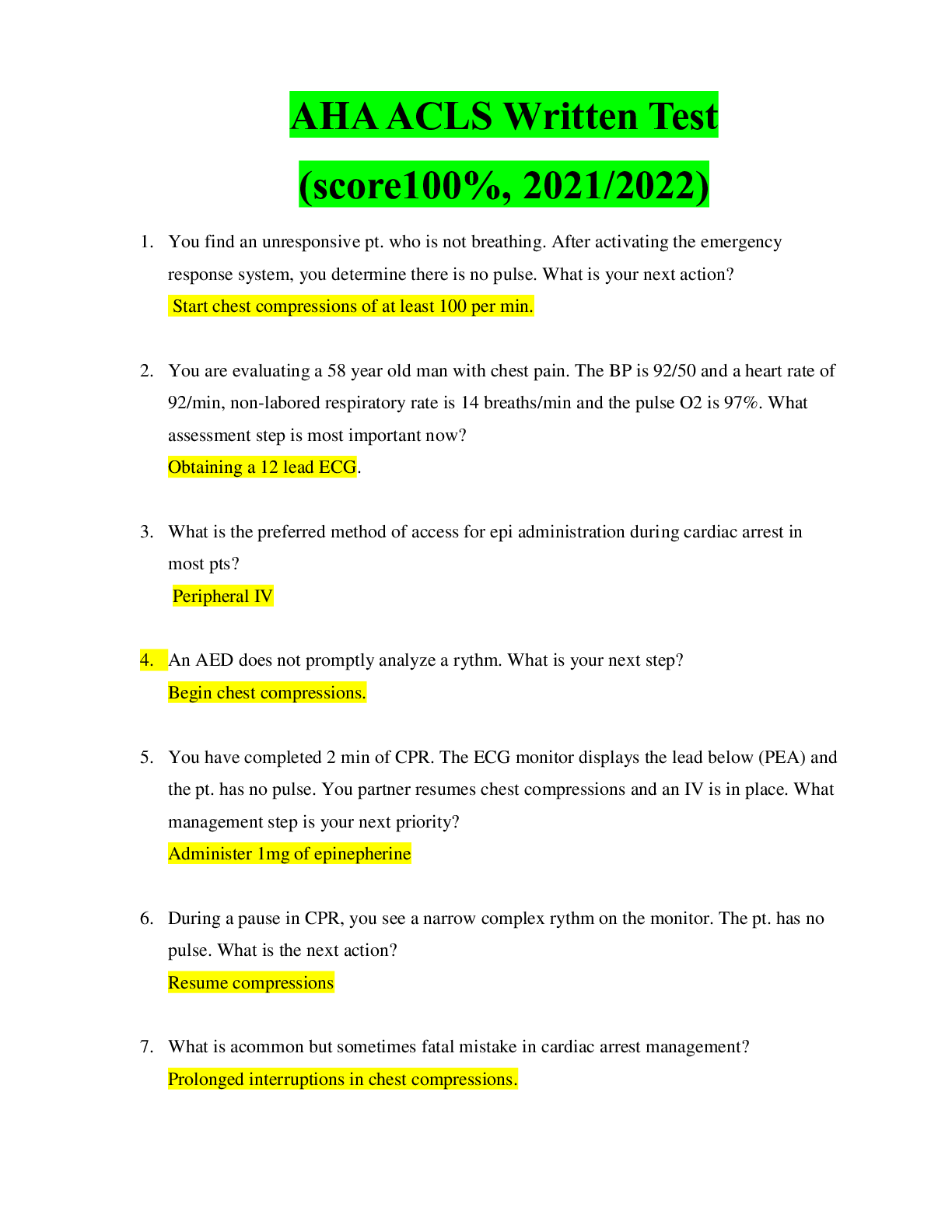

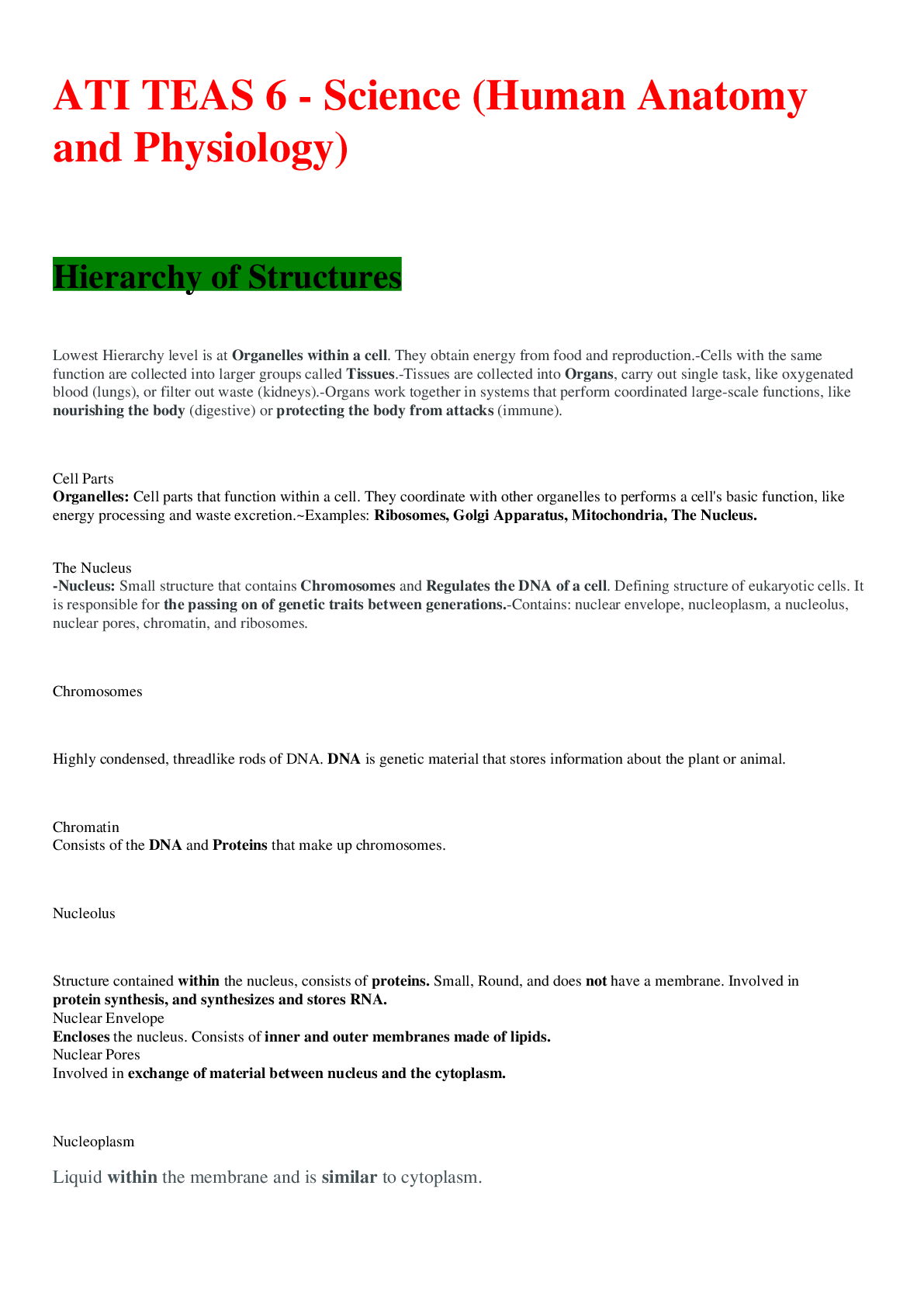
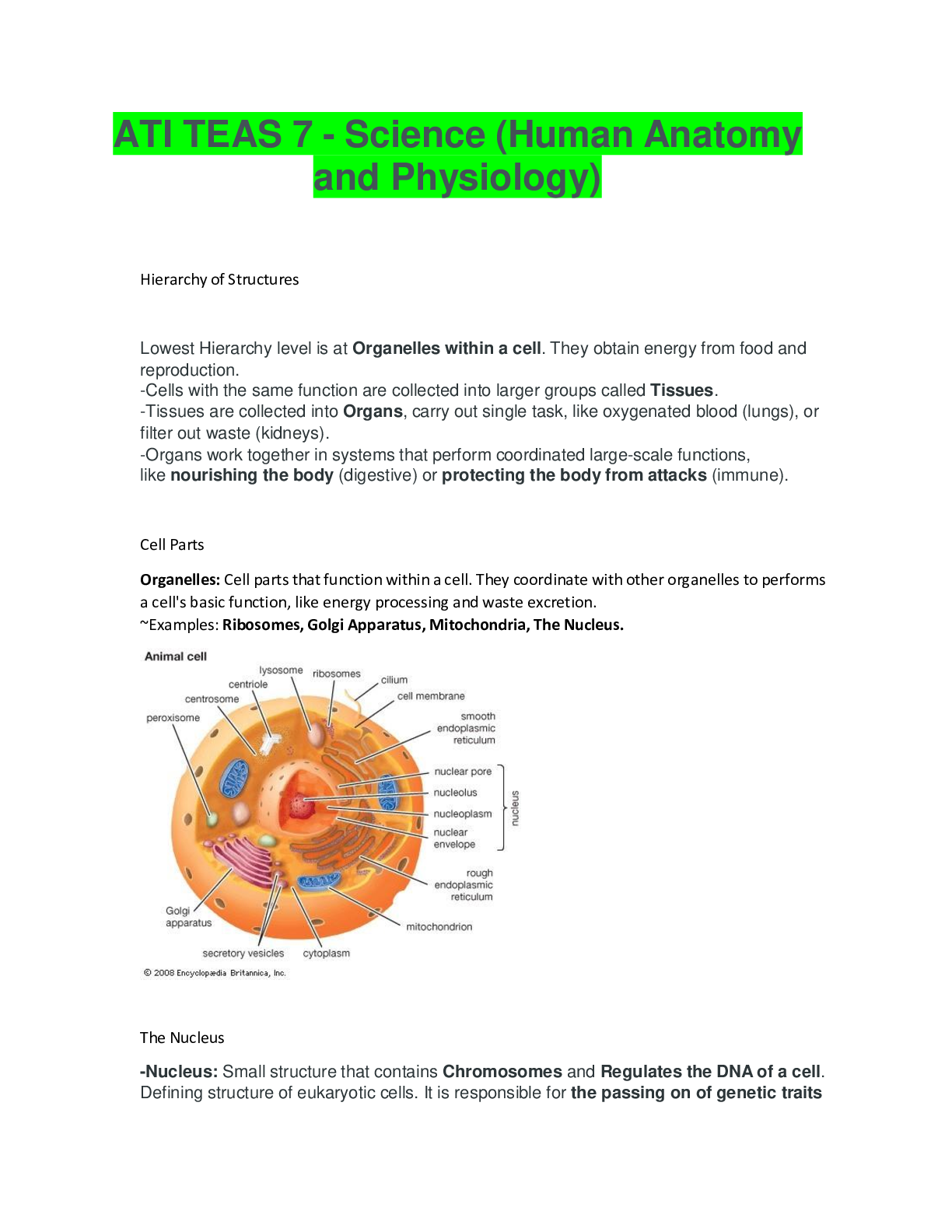
.png)
-study guide-2022.png)
 Study Guide.png)






.png)

